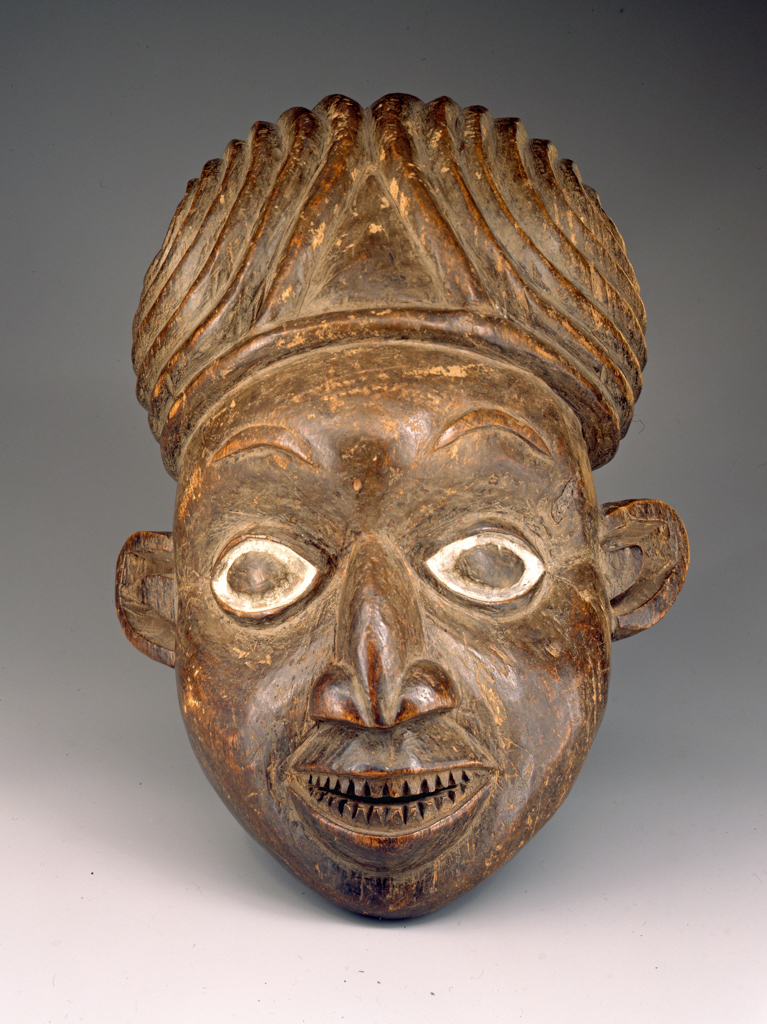Helmet Mask

unknown Kom Kingdom artist, Helmet Mask, late 19th century, iroko wood and kaolin, The Paul and Clara Gebauer Collection of Cameroon Art; Gift of The Collins Foundation, public domain, 70.10.13
This work is not currently on view.
- Title
Helmet Mask
- Artist
unknown Kom Kingdom artist (Kom Kingdom, Cameroon Grassfields)
- Date
late 19th century
- Medium
iroko wood and kaolin
- Dimensions (H x W x D)
15 1/2 in x 10 1/2 in x 11 in
- Collection Area
African Art
- Category
Cameroon
Ceremonial and Ritual Objects
- Object Type
mask
- Culture
Kom Kingdom
- Credit Line
The Paul and Clara Gebauer Collection of Cameroon Art; Gift of The Collins Foundation
- Accession Number
70.10.13
- Copyright
public domain
- Terms
In 1933, Fon Ndi, who ruled the kingdom of Kom from 1926 to 1954, gave this helmet crest to Paul Gebauer, in recognition of Gebauer's services rendered to him. According to Fon Ndi, this mask danced during the reign of Fon Yu (ruled ca. 1865-1912), one of his predecessors.
In Kom, various types of masks were associated with performances of kwifoyn, an influential male secret society based at the palace, which acted as the fon's executive body in ritual, political, and legal matters. Masqueraders appeared at funerals of deceased kwifoyn members, some of them wearing this type of crest, called a "running mask." The masquerader wore a feather tunic with the crest on top of his head, which was covered with fiber cloth. A feather tuft was inserted into a hole on top of the crest.
This male mask displays stylistic features common to many anthropomorphic masks from the northwestern part of the Cameroon Grassfields. The rounded, smooth face is marked by a straight nose with pronounced nostrils, almond-shaped eyes delineated with kaolin, and a protruding, gaping mouth with pointed teeth. Pointed front teeth were considered an ideal of male and female beauty, and to this day one encounters old people whose teeth were chipped in their youth to create this effect. The headdress with the triangular frontal inset resembles the looped cotton caps that were worn by important Kom men.









